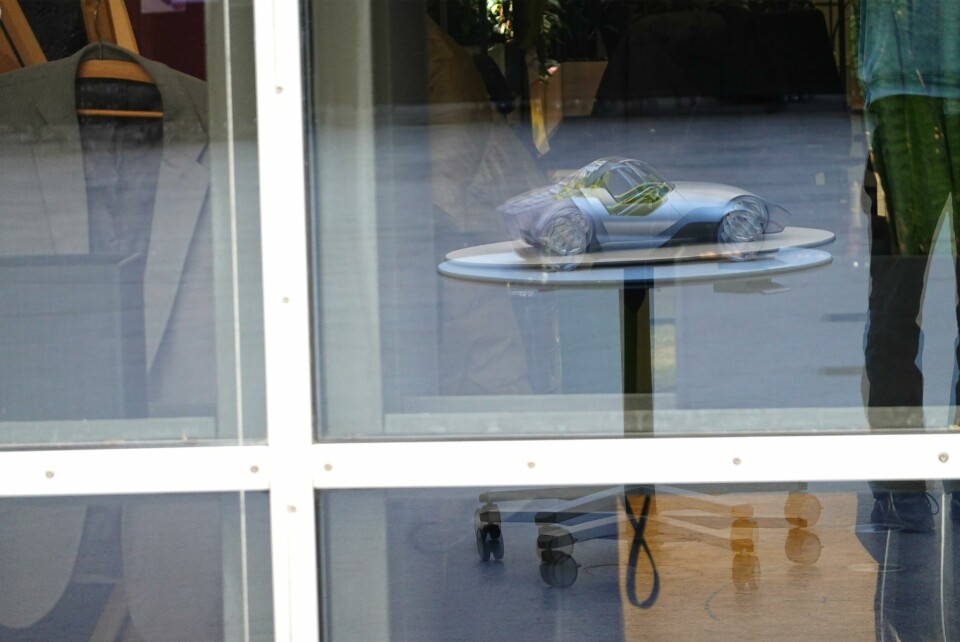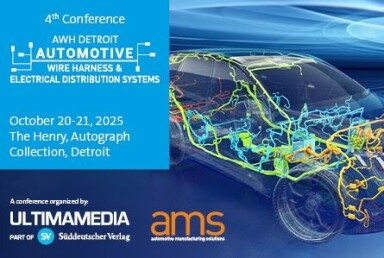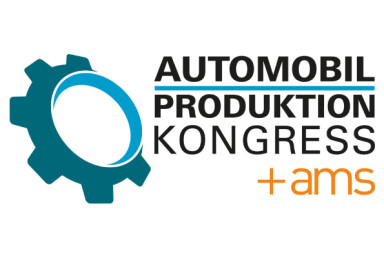
Pforzheim BA Transportation Design degree show 2025
In the first of a two-part series, CDN looks at the work put together by Pforzheim’s BA Transportation Design students
Student degree shows are an excellent reminder that car design is incredibly creative and ultimately about having fun. The joy of the craft and experimenting with both traditional and emerging tools without the pressure of working in a professional studio. Pforzheim has brought many famous names through the ranks over the years, and CDN went along to learn more about the current crop. Beyond chatting, we even pushed some students to sketch against the clock and showcase their abilities in real time.
Following the success of last year’s outing, school organisers decided to expand into the adjacent building to bring everyone under one roof. Although the 2024 degree show felt well put together across the lower and upper floors, it did mean that many students were separated from their peers and perhaps ran the risk of going unnoticed to anyone who did not venture up the steps. This year’s setting felt more open and encouraged mingling among the students as they waited for visitors to chat about their projects. They did not have to wait long in most cases, with the professionals-only day drawing strong interest from a range of designers – we assume in many cases scouting potential recruits.
We did not manage to speak to everyone on the day. A handful of students listed below have been highlighted by course leaders Kurt Beyer and class of 2008 graduate Jürgen Jose, who joined Pforzheim in a teaching capacity in April 2024. The following list of Bachelor’s students follows no particular order but is grouped by semester, moving from third through to final thesis.
Third Semester
Jonas Püschl – Clear Horizons
As student shows in recent years have highlighted, it is not just about cars anymore. The next generation of designers are being encouraged to look more broadly at transportation as a whole, be it on land, sea, air or even higher up.
Indeed, Clear Horizons aims to capture space debris and create clean flying zones for other spacecraft above the earth’s atmosphere. Püschl envisions groups of these vehicles (craft?) working together, almost like a public service to keep streets tidy.
Visually, the exterior is angular and sharped edged from some views, particularly the side profile, while softer and more rounded in others. The wings/sails accentuate the brutalist theme, as does the view from below which has an air of the F16 fighter jet about it. His sketching style is clean and precise which suits this particular project.
Nils Graupner – HERO
I need a hero: it’s got to be strong, it’s got to be fast and it’s got to be… a helpful rescue robot. Graupner’s concept draws on the anxiety-inducing theme of increasingly frequent natural disasters where new vehicles are required to perform search and rescue missions.
The idea is that HERO will use technologies – such as vibration detection – to scout out wreckages and disaster sites in swarms. Again, this is not a car but a robotic quadruped and the design is simple yet functional with an upright central cone that houses the central computer and sensors. Partially immersed in water in one render, we cannot help but feel the exterior takes inspiration from a starfish or crab.
Fourth Semester
Marie Konstanzer – Pixel Taxi
A visit to Tokyo served up inspiration for Konstanzer’s concept. Observing how groups of school children got around the city, she felt that a compact and fun taxi would be a more appropriate means of travel. “I wanted to create something colourful and playful,” Konstanzer told CDN, “but also something that felt capable and safe, not like a toy.”
The Pixel taxi takes an interesting triangular form with rounded edges, inspired partly by Japanese rice balls, while the bright colours drew upon Koinobori windsocks. “The shape was quite simple to start with, but I wanted it to be more iconic,” notes Konstanzer.
Where does the name Pixel come from, exactly? Well, aside from the compact footprint (viewed from above, it does indeed look like a pixel) there is a wider concept behind it: “This taxi uses swarm intelligence to move as a group, colouring in the city pixel by pixel. This strengthens the sense of community and allows for a safe journey.”
On display as a finished clay model, Konstanzer reflects that the process of putting it together was not only fun but genuinely useful. “It helped me refine and figure out what would work,” she explains. “At one point, I realised it might end up looking like a puffer jacket.” Prior experience with clay pottery seems to have served her well here, we would say.
Peer Steffensen – Greenline
Addressing the ‘Taxi in the City’ brief, Steffensen went a little off piste and imagined a new metropolis: the Amazon rainforest. Here, treehouses would be built high up in the treeline as digital detox retreats. Rather than swinging from vines, people would instead get around via a floating sphere attached to a series of rope systems. This sphere is attached to a long blade-like structure that creates the appearance of a chrysalis or cocoon.
This was entirely by design, he told us, aiming to blend in with the surroundings. “I wanted it to feel like a safe space,” he explains, ”and looked at organic shapes when it came to creating the exterior.” This is showcased nicely in development sketches. We noticed some Goretex branding on the side of the model on display – very well assembled, as it happens – as a nod to the supplementary ‘technical’ theme, no doubt inspired by the contemporary Gorpcore fashion trend.
“Greenline ensures that while you’re taking in the views, you’re also traveling in a safe and sustainable way,” says Steffensen. “It’s a vision of future travel that’s light on the environment but heavy on meaningful, immersive experiences.” It’s worth noting that he dedicates much of his spare time towards a design podcast dubbed Horizontlinie. Check it out.
Patrick Rell – Portechaise
Rell looked back in time for his project, drawing inspiration from French baroque design and in particular the Portechaise, a carriage carried (say that three times quickly) by hand during the 17th and 18th centuries.
He too was working to the Taxi in the City brief, and felt that the elegance of these “sculptural” designs could be translated into a modern form. “It breaks away from the current mainstream aesthetic,” Rell says, using descriptors like geometric and flat to emphasise the difference in styles.
Rell’s concept did aaway with notions of speed and urgency, instead focussing on tranquility and comfort. “It wasn’t the fastest way of getting around,” he jokes of the original Portechaise services, “but it would have been very relaxing.” For the passenger, at least. Luckily for hypothetical users of this new concept, there are traditional wheels and a propulsion system on board
Rell found the process of clay modelling enjoyable but challenging, racking up seven to eight hours a day at times. He did not have an OEM partner supporting this project, but found that this ended up giving more freedom, in his eyes. Rell was keen to join us later for a sketch against the clock.
Sarah Lu – Shanghai Unicab
Lu’s concept draws inspiration from the skyline of Shanghai and is indeed designed for this city in particular. More specifically, the exterior draws inspiration from the peaked rooftops of traditional Chinese buildings while channelling the modernity of the many skyscrapers that surround them today.
At first glance it appears modern, cold even, but closer inspection (and detailed nicely in sketches and renders) it has a cottage-y vibe with family gathered around a pot of tea in the cabin.
“This is a vehicle that overcomes barriers and enables mobility for everyone, regardless of social background,” Lu emphasises.
Like many others, Lu showcased the concept with a physical clay model which was put together with support from industry giant BASF. Lu also took part in our impromptu sketchathon and was in fact first and second up after a failed initial recording… Oops.
Sixth Semester
Katharina Rott – CAB:in
The network of canals and floating communities that criss-cross Amsterdam served as the basis for Rott’s concept, a monolithic Starck-esque compact yacht that rethinks the water taxi for 2050.
In particular, the Schoonschip neighbourhood was central to the idea behind this electric, autonomous boat, detailed nicely in a 16-page leaflet. Concept aside, it is testament to some of the core artistic skills that students bring these days, with the notebook-size pamphlet featuring some wonderful artwork. Unfold it, and there is even a (fictional) map of Amsterdam’s floating neighbourhoods, including other locations such as Waterbuurt.
To address varied dock heights, the boat features a sloped side that makes it easy to walk on or off, doubling as steps but also the roof. Vertical fluting can be seen throughout, from the rear ‘diffuser’ at the tail to the sofa cushions inside.
Rott paid close attention to the interior design and CMF, with waterproof materials selected for obvious reasons, and a four-seat layout that prioritises the captain’s chair (“CAB:tain”).”The waterproof interior, inspired by tech wear, is removable for cleaning and repairs,” says Rott. ”Bicycles and deliveries are accommodated—perhaps you’re even on board for the daily duck-feeding stop!”
Nae Guhn Yi – ELVIS
Picture the scene. The year is 2050. You’re in Miami. Most of the city is underwater. What you need, is Elvis.
Allow us to explain. Yi’s concept imagines a partially-submerged city where residents will need new means of getting around, but still in style. It employs a pop-culture reference nicely, drawing on Sonny Crockett’s pet alligator’ Elvis’ from Miami Vice.
In this case, the acronym ELVIS stands for Enhanced Land and Vessel Integration Shuttle. “It’s the answer to Miami’s evolving mobility needs,” Yi says, “and just like a real alligator, moves seamlessly between land and water, switching between two modes.”
Those are “drive-on” mode with an upright secure seating position for road driving, and “dive-in” mode where the seat folds back and the outer ring inflates. ”This fully autonomous taxi offers space for two passengers,” explains Yi, “and reflects Miami’s Art Deco heritage in its sleek, circular interior.”
Kaan Hüseyin Hizal – Anlatan
On display with a striking interior model, Anlatan employs a mixture of muted neutral tones with bright prime colours, inspired by the vistas of Izmir in Turkey. The captain’s chair sits alone up front, flanked by two ‘explorer’ chairs, which swivel, behind it. At the rear is another set of seats, combined this time as more of a sofa area from which to lounge and relax.
There is some incredible detail, such as a microscopic newspaper (no larger than a postage stamp) resting on the coffee table at the centre of the model’s interior. At the front, a set of tiny bungee cords show how luggage would be stored in more of a rugged yet authentic way, rethinking perceptions of luxury. Commenting on the model itself, Hizal told CDN that there were “plenty of night shifts” to get it right, and is generally open to any field of design despite clearly showcasing some interior know-how.
Final Thesis
Leonhard Blumhoff – Canyon Shredpack ULTRA
This project is aimed squarely at ‘adrenaline nomads’ – outdoorsy folk that get a kick from extreme sports, experiences and hobbies. Think skiing and rallying. However, these activities can pollute and leave their mark on the natural environment, says Blumhoff, which is where his concept comes in.
Integrated storage is a key theme of the concept, with the Renthal-style bar padding doubling as a bum/cross-body bag. A frame bag was also created (in real life, by Canyon Bicycles’ Yeong Jiun Chua) to strap between the two main rails of the body structure. This uses a bio-based composite fabric.
A nice touch can be seen on the tread pattern, made using the letters for CANYON. This can be covered with a low rolling resistance tread sleeve for road cycling away from the trails. A very nicely finished concept that seems to blend retro themes (orange, black and silver theme reminded us of the 1970 Mercedes C111 concept) with modern tech.
Leon Zippel
Zippel looked to combine Mercedes-Benz with hip hop culture to create a new icon. The idea was to merge the creative processes of music production and car design, and has resulted in a brutalist – gothic even – cabriolet with a super long wheelbase, split windscreen and Scarab beetle-esque tail, complete with integrated light bar.
A graffiti ‘Benz’ on the rear quarter is perhaps the most obvious nod to hip hop, and elsewhere, nods to low rider culture can be seen with the wheel design. The split windscreen comes as a result of a thin blade-like structure that pierces through into the interior and connects where the C-pillar would begin, separating driver and passenger.
Zippel’s finished concept was on display with a nicely finished scale model of the design, rendered in a high-gloss black that worked well with the overhead lighting.
David Willke
Not content with the range of powertrains on offer and challenging the ‘green’ status of many new alternative propulsion systems, Wilke looked instead to inductive charging. This exploration revealed how car designs could drastically change, as they are connected to the wider energy system while driving.
”The large induction coil on the underside of the vehicle brings several additional advantages. Due to magnetism, it is no longer necessary to mount a large rear wing on the car to generate drag and downforce, and in future, the energy exchange could make racing in general more exciting,” says Wilke. “With the interaction between driver, car, and now the racetrack itself, rules could be implemented that were previously only known from video games.”
In a bold yet understandable move, Wilke also made a conscious decision to ”avoid styling as much as possible.” Instead, inspiration came from 1980s Group C racers, with “brutal volumes and generous cut-outs that communicate the car’s function.” Meanwhile, the front end took cues from a more contemporary racing series: Formula E.
Styling may not have been the goal, but it is certainly a striking exterior with sleek surfacing and a body that is almost glued to the ground and would not look hugely out of place alongside a Mazda 787B or Porsche 956.
Max Barthe – Adventure Coach
“The Adventure Coach is about an instinct that is deeply rooted in human nature,” says Barthe, “and by focussing on the journey rather than the destination, it follows the urge and desire to discover new things.” Designed for exploration of the commercial kind – think polar tourism – the coach is built for harsh terrain and environments.
Visually, the body is separated into two cylindrical sections almost like an insect, allowing it to manoeuvre the on a hinged joint in the centre.
The triangular wheels use tracks instead of tyres for rolling through snow, while the blue accents serve as the only splash of colour on the exterior. It is clean and functional. Wide, wraparound glass sections at the front and rear provide decent viewing stations akin to that of a commercial ship.
Georg Wabnegger – BMW MUC
The BMW MUC concept is based around a car sharing model exclusively for Munich (let’s hope it would be more successful than SHARE NOW…). Wabnegger’s design certainly gives it a good shot of doing so, described the design as being “a proper BMW” that is based on the core value of “Freude am Fahren” (sheer driving pleasure).
It does indeed feel quite BMW. There is a hint of the Z1 from the front end and its low-slung headlights (and overall two-seat proportions). The bubble roof is somewhat resemblant of the Isetta city car, too.
The overall colour theme seems directly inspired by the official BMW Neue Klasse concepts, while the rear has an air of the Z8 about it.
These apparent influences only come across after careful assessment from various different angles – the initial impression is somewhat unique, which we would assume was the goal for Wabnegger. In terms of the architecture, the batteries are position between driver and codriver/passenger, “leading to sporty proportions and a go-kart like driving experience.”
The inclusion of an ice cream cone holder on the IP is a nice touch, but careful not to spill any on those yellow seats.


